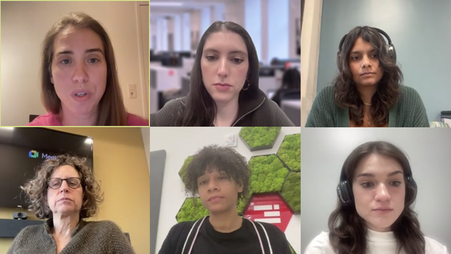
When Donald Trump was sworn into office one year ago, he took a pledge to defend the United States Constitution. But as the dozens of incidents we document in our U.S. Press Freedom Tracker bear out, he has instead spent the first year of his presidency incessantly attacking the First Amendment and the free press it is intended to support.
Just one month after his inauguration, Trump referred to the media as the “enemy of the American people”. In August 2017, he told his supporters in a speech that journalists “don’t like our country.” Trump targets specific journalists and news organizations whose coverage he finds unfavorable, such as the New York Times, CNN, and NBC. His Twitter diatribes about “fake news” often cite these outlets by name. In July, he tweeted a video depicting him beating up a figure whose head had been edited and replaced by the CNN logo. He has vowed to revoke NBC’s broadcast license under the Federal Communications Commission (although he lacks the unilateral authority to do so).
Beyond calling any critical press “fake news,” Trump has a long history of threatening to sue news organizations and journalists over coverage he doesn’t like. This month, he repeated his vow to “take a strong look at libel laws” to make winning defamation lawsuits against news organizations easier. He recently attempted and failed to stop the publication of a book exposing details of the Trump administration, and his lawyer sent a cease-and-desist letter to the author and publisher.
In November, Trump called CNN International “fake news” and accused it of misrepresenting the United States to the world. American journalists working abroad lack the legal protections that protect them domestically, so they rely on the influence of the White House to shield them. These callous attacks are dangerous, and could put journalists at risk and provide political cover for oppressive, authoritarian regimes the world over to crack down on press freedom.
Trump’s disregard for the First Amendment has ramifications far beyond the United States. In February, a Cambodian official cited the White House’s decision to block several news outlets from a press briefing as a justification for Cambodia’s threats to shut down critical media organizations. When the Philippine president called journalists “spies” in a meeting, Trump laughed in response. The United States should be a bastion of press freedom around the world, but Trump is inspiring corrupt regimes to justify restrictions on journalism
It’s not just Trump himself who has attacked the press—his administration has attempted to jail journalists and cracked down on freedom of information. Trump’s Department of Justice aggressively prosecuted two journalists swept up in mass arrests the weekend of his inauguration, charging them with felonies that carry maximum sentences of decades in prison. While videographer Alexei Wood was rightfully acquitted of all charges in December, reporter Aaron Cantú could still face up to 75 years in prison for doing his job covering a newsworthy political protest. Attorney General Jeff Sessions has increased its investigations into leakers by 800% since 2016 and considers jailing journalists who publish classified information, and Trump’s CIA Director has threatened Wikileaks with legal action.
One year into his presidency, Trump hasn’t followed through on the vast majority of the threats he’s made against the press—he hasn’t pressured Congress to change libel laws or filed defamation lawsuits against the New York Times. But these attacks are harmful nevertheless. Whether specific legal actions or just dangerous rhetoric, his assaults on press freedom are an egregious abuse of his position of power as the president of the United States and fundamentally contrary to constitutional protections for democracy.




